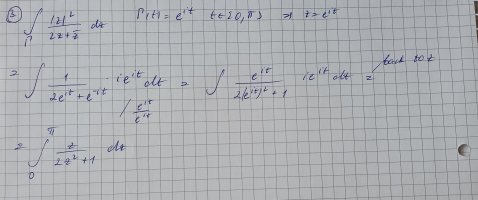Hi, I have to solve the following integral:
My understanding is quite chaotic. But I have so far translated it into integral in terms of z only, using a theorem for complex integration.
My question is, can I now say that the primitive function of that is some ln(2z²+1)/4 and just plug in -1 and 1? I have some serious confusion about this because of discontinuity of ln(z). Do I have to state the interval for the argument? The singularities of the following function are ±√2i, does it matter?
My understanding is quite chaotic. But I have so far translated it into integral in terms of z only, using a theorem for complex integration.
My question is, can I now say that the primitive function of that is some ln(2z²+1)/4 and just plug in -1 and 1? I have some serious confusion about this because of discontinuity of ln(z). Do I have to state the interval for the argument? The singularities of the following function are ±√2i, does it matter?

